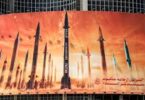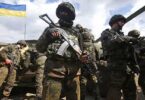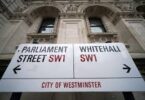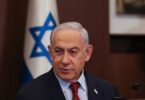Andrei Kolesnikov / Boris Makarenko
The Duma electoral campaign will lock in the inertia of parliamentary party dynamics. The regime will arrive at the 2024 presidential elections with a solid parliamentary majority.
The 2016 elections to the State Duma went well for the Kremlin. The ruling United Russia party won a record-high 343 seats (76 percent of the 450 seats in Russia’s lower house of parliament), and—crucially for regimes like Russia’s—without any major scandals or protests. Since 2016, changes on the party-electoral arena have been negligible, which is not surprising: the nature of the political regime has largely remained unchanged over the past five years.
First of all, the state maintains a high degree of control over parliamentary parties and most civil society institutions. The authorities view all those who do not fit into this system with suspicion and limit their freedom of action. This is a “neocorporatist” model in which parties are recognized or licensed (if not created) by the state and granted a representational monopoly within their categories in exchange for observing certain controls on their selection of leaders and articulation of demands and supports.1
Second, the regime is becoming more and more personalist, lacking mechanisms for the succession of power. President Vladimir Putin’s approval rating has declined in recent years from record-high levels (over 80 percent shortly after the annexation of Crimea in 2014) to about 60 percent (63 percent in March 2021, 67 percent in May 2021). Nevertheless, in his twenty-second year in leadership (since becoming acting prime minister in August 1999), Putin remains, in the eyes of most Russians, a unifying national symbol and the guarantor of stability.
Voter Motivation
In a personalist, corporatist regime—with palpably low competition—the role of elections is, above all, to serve as a ritual of political participation.2 Real attitudes toward the authorities remain latent and are not expressed by electoral results. Voting takes place by inertia.
En masse, voters are not oriented on trying to change the regime or even impact policy and ensure the accountability of politicians to society. The unchangeability of the regime and the manageability of the parliamentary opposition result in the obedience of voters. Paternalist sentiments reflect the outsize role played by the state in the economy: for many, the state is the only possible employer and source of social support.
In elections for parliament, which is viewed as weak and not very popular, Russians express their emotional and psychological attitudes toward the regime: loyalty is expressed with ballots for United Russia, disappointment—with votes for A Just Russia and other paternalist parties, and irritability and hostility—with votes for the Communist Party of the Russian Federation (CPRF). A separate category of sentiments is expressed by populist voting for the party with the most strident, nihilist bravado, the Liberal Democratic Party of Russia (LDPR).
All of this is the typical reaction of obedient and not “participatory” (i.e., civic) political culture, according to Gabriel Almond and Sidney Verba.3 The culture of citizens—individuals who don’t just understand politics but are oriented on participating in politics—is limited in Russia and not represented in parliament. Accordingly, electoral procedures turn into a sort of marketplace of social promises and demands: many Russians vote for social benefits and payments rather than for the parties themselves. The source of benefits and payments is the state. Accordingly, those who believe its promises have a rational motivation to vote for the party of power, and those who do not—to vote for other parties.
Based on the degree of institutional distrust toward Russian parliamentarianism and its multi-party system, discredited by many years of “managed” election campaigns, few Russians seriously expect real representation of their interests and ideologies in the Duma. It is no accident that the 2016 election had the lowest voter turnout in the history of parliamentary elections in modern Russia: 47.88 percent (prior to that, voter turnout was over 60 percent in four previous elections and over 55 percent in another two). The authorities reportedly expect voter turnout to be even lower this time: 45 percent.
In these conditions, what’s really at stake in the elections—at least for the powers that be—is unchanged from 2016: proving their legitimacy, which requires victory by United Russia, sufficient transparency of electoral procedures, and the absence of major scandals and protests against election-rigging. These objectives were achieved in 2016. Today, the ratings of United Russia are almost 20 percentage points lower than they were five years ago. The government’s 2018 announcement on raising the retirement age triggered mass social discontent and plummeting ratings. Accordingly, it is very likely that the election results in 2021 will also be worse, and attempts to improve them using administrative resources run the risk of delegitimizing the elections and prompting protests. Thus, the first unknown of the upcoming elections is the degree to which they will be viewed as legitimate by elites and the public.
Starting Position: United Russia
The main challenge for the party of power is that it essentially lacks a separate identity from the executive branch. The lower presidential ratings, the troubled economic situation, and declining living standards all mean that the paternalist electorate, which expects assistance from the state, will exhibit less loyalism and more disillusionment and frustration, which is already expressed by falling ratings.
On the other hand, United Russia has the advantage of an electoral field that is tilted in its favor: many aspects of the electoral system and administrative resources are custom-made for the ruling party.
United Russia is unlikely to replicate the 76 percent majority that it won in the 2016 elections. Nevertheless, the party of power is effectively guaranteed dominance in the next Duma.
Given its current ratings, United Russia will win at least 40 percent of the vote based on party lists. It will also end up with the share of the votes cast for parties that do not pass the 5 percent threshold needed to qualify for seats distributed by party lists. This gives the ruling party at least 100 seats.
In the single-mandate districts, the competition will be more rigorous, on average, than in the previous election, when United Russia won 203 of 225 districts. Today there are dozens of districts, primarily in major cities, where United Russia candidates will encounter challenges. However, the party is still sure to win most of the districts. This means that the pro-Kremlin party is almost guaranteed a simple majority. The question of whether United Russia will have a qualified majority (301 seats), which allows the party to make amendments to the constitution on its own, remains open. This is the second unknown of the elections.
A component of this question is “will ‘smart voting’ be effective?”—just in competitive single-mandate districts, of course. “Smart voting” was the name given in 2019, prior to the Moscow City Duma elections, to an initiative by opposition politician Alexei Navalny: to give opposition voters the name of a single, presumably strongest, opposition candidate for each district so that they could vote for that candidate to the detriment of the United Russia candidate (33 of the 45 “recommended” candidates were from the CPRF). “Smart voting” candidates won in 19 of 45 districts.4 As a result, Moscow’s legislative assembly has the highest proportion of opposition deputies in Russia.
The third unknown is: who will get second and third place in the elections based on party lists? All three parties of the parliamentary opposition currently have ratings that easily surpass the 5 percent threshold (see figure below). Based on the results of past elections, this essentially guarantees them seats in the Duma.
The Communist Party of the Russian Federation remains the second strongest parliamentary party based on both ratings and public perceptions. It is also less likely to toe the Kremlin’s line than the other two parliamentary opposition parties. Furthermore, a solid electoral core with a high discipline of showing up at the polls has long been and remains a trump card for the CPRF at elections.
However, in recent years, despite a significant decline in United Russia’s performance, the ratings of the CPRF in regional elections did not really rise. One of the reasons for this was the high activity of spoiler parties. Another factor is the unwieldiness and moral obsolescence of the party, which will likely be led in its eighth parliamentary election by its unchanging head Gennady Zyuganov.
Of course the CPRF—and only the CPRF—has one more electoral advantage: CPRF candidates will be the main opponents of United Russia candidates in many single-mandate districts, in part because its stable core of voters will make its candidates the most appealing for “smart voting,” even though the party formally distances itself from this initiative.
Starting Position: LDPR
Like the CPRF, the LDPR will be headed in its eighth parliamentary election by the same leader, Vladimir Zhirinovsky. This veteran of electoral battles is also showing signs of moral depreciation, but the LDPR is so personality-driven that no alternative to Zhirinovsky exists or is likely to be found in the future. In recent years, the party has achieved stable results in regional elections.
The CPRF is traditionally considered the second strongest party in the Russian parliament. However, in 2016 it only outperformed the LDPR by 0.2 percentage points (13.34 percent compared to 13.14 percent), and the two parties’ current ratings are comparable. The CPRF enjoys the image of the main opposition party and a disciplined electorate, but it will lose some votes to “spoilers”—candidates from small parties that operate in the same electoral niche—whereas the LDPR will not face such a problem.
Starting Position: A Just Russia–Patriots of Russia–For Truth
A Just Russia, which has been in the Duma for three convocations in a row, now carries the above triple name, having merged with two other left-wing nationalist parties.
The “inoculation” of the ostensibly social-democratic A Just Russia with the rigid traditionalism and nationalism of Zakhar Prilepin’s For Truth can be viewed as a field experiment. Essentially, it was a test run for a populist movement that mixes left-wing and far right-wing ideologies.
All three united parties are in the niche of the moderate, semi-loyal opposition, and appeal to conservative, paternalistic voters. It is difficult to predict what effect Zakhar Prilepin—a popular writer with a macho image—will have on the campaign. However, the party can expect a narrow band of possible outcomes: it will almost certainly make it into the Duma, but it is unlikely to be a contender for second place.

Fourth unknown: will new parties enter the Duma? Since 2003, all Duma convocations have had the same four parties, with the only change being that the Motherland bloc transformed into A Just Russia in 2006. Throughout that time, no other party has even gotten close to clearing the 5 percent hurdle. Current ratings show that there are several small parties with about 1 percent of the vote. The situation for the newcomers seems bleak, but there are grounds for believing that two parties have some hope: the Russian Party of Pensioners for Social Justice and New People, both of which were able to get seats in several regional legislative assemblies in 2020.
Each of the two new parties that set their sights on getting into the next Duma has a key word in its name that appeals to voters who are disillusioned by the unchanging party offerings: one (Russian Party of Pensioners for Social Justice) focuses on the higher symbolic value of the pension age since it was raised in 2018; the other (New People)—on the demand for something new.
The remaining seven parties that have the right to register candidates for the elections without collecting signatures have virtually no chances of making it into the Duma based on party lists. These include the center-left liberal Yabloko party, which is a veteran of Russian elections, as well as several parties that essentially function as “spoilers” for the CPRF and A Just Russia.
Likely Scenarios and Results
There are two interdependent parameters that will determine the likely results and consequences of the elections: the level of their legitimacy (largely defined by the absence of major scandals) and the results achieved by United Russia.
In any of the below scenarios, the number of parties in the State Duma may grow for the first time since 2003 to five or even six. The potential arrival of the Russian Party of Pensioners for Social Justice to the Duma would change little: the party is the same kind of “disillusioned paternalism” party as A Just Russia, except without such a dynamic platform, high ambitions, or prominent heavyweights. New People is also light on major political figures, but its platform is committed to change, action, and progress in a way that differentiates it from all current Duma players. It is hard to predict how its members would behave if they became deputies, but some shake-up in parliamentary life and some radicalization of polemics would be likely.
If the party of power is able to win a constitutional majority—to reiterate, without scandals or overexerting administrative resources—the inertia development scenario in parliamentary party life will continue. The regime will arrive at the 2024 presidential elections with a solid parliamentary majority.
The second scenario, in which United Russia wins a majority but not two-thirds of the votes, does not differ greatly from the first. The party of power would view this as a lack of success, because it had publicly announced its goal of winning a constitutional majority before the elections. Still, a simple majority (which is essentially guaranteed for United Russia) is quite sufficient for parliamentary approval of almost all political decisions—plus, if needed, United Russia will be able to secure the support of other factions without too much trouble (with the caveat that the CPRF might not be agreeable on all issues).
The third scenario—controversial elections—is the least likely. The Kremlin understands that such a situation would make a new wave of street protests virtually inevitable, and that this wave could be more powerful and geographically widespread than the protests on Bolotnaya Square in Moscow after the 2011 elections. Furthermore, a harsh crackdown on protests would doubtlessly undermine the legitimacy of the regime and put even more distance between those for and those against the regime, and such a divide could not be managed through the system of political parties that are dependent on the neocorporatist, unchanging regime. The authorities will try to avoid a large-scale crisis of that kind.
Notes
1 Philippe Schmitter, “Still the Century of Corporatism?” in Trends Toward Corporatist Intermediation, ed. Philippe Schmitter and Gerhard Lehmbruch (Beverly Hills, CA: Sage Publications, 1979), 13.
2 Murray Edelman, The Symbolic Uses of Politics (Urbana: University of Illinois Press, 1964), 3.
3 Gabriel Almond and Sidney Verba, The Civic Culture: Political Attitudes and Democracy in Five Nations (Princeton: Princeton University Press, 1963), 17–18.
4 Two CPRF candidates, Leonid Zyuganov (the grandson of CPRF leader Gennady Zyuganov) and Nikolai Gubenko, were “coordinated” by the party with the mayor’s office, and United Russia did not run candidates against them.






